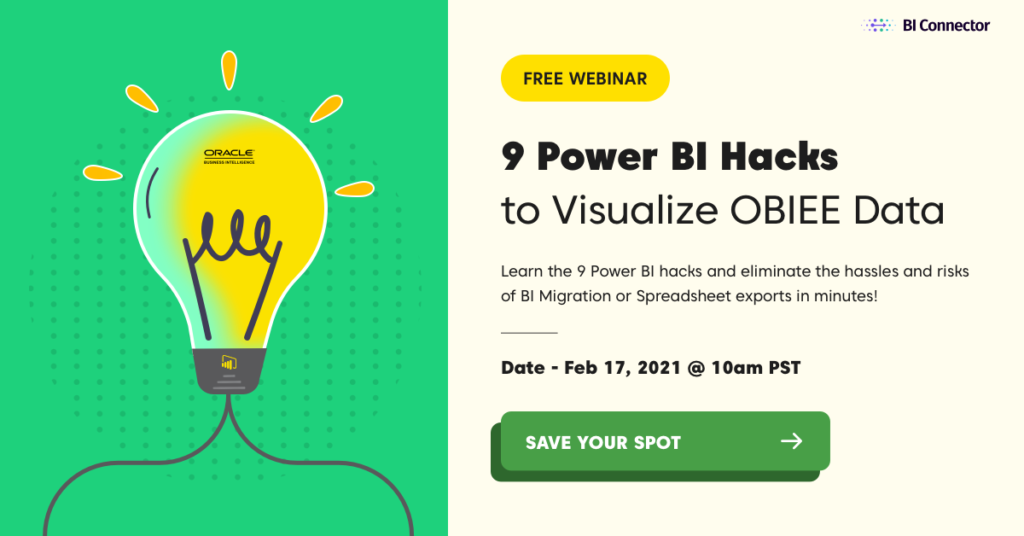[Oracle BI Data Visualization] Eliminate Bottlenecks With 9 Power BI Hacks
One of the main drawbacks of Oracle Business Intelligence Enterprise Edition (OBIEE) is its lack of data visualization capabilities.
The end-users feel forced to cross many hurdles for creating a simple bar graph or pie chart. OBIEE demands a tonne of technical know-how to create data visualization.
The bottlenecks result in user frustration, as data visualization is the new normal path taken to make data-driven decisions.
From the IT Teams’ perspective, OBIEE is quite a friendly platform for data management. It acts as a single source of truth for the organization.
The IT Teams have already invested (budget, time, and effort) heavily in creating the single source of truth in OBIEE. Hence, the IT Teams are reluctant to switch to a different self-service BI platform like Power BI, at the cost of wiping out the single source of truth in OBIEE.
This conflict of interest among the IT Teams and Business Users has left many organizations at crossroads.
On one side, BI migration is desired, but such migration projects have their own complexities in terms of budgetary and timeline risks. On the other hand, the users cannot be forced to use a traditional platform when they are well-aware that self-service data visualization is a lot simplified in platforms such as Power BI.
The spreadsheet import from OBIEE to Power BI is used as a makeshift option by many users as many organizations are stuck to make a decision in retiring or retaining OBIEE. However, the spreadsheet imports are cumbersome and error-prone due to the manual processes involved.
All these factors drive organizations to connect a data visualization tool such as Power BI to OBIEE in an automated way.
Some organizations, despite moving to Oracle Analytics Cloud (OAC) or Oracle Analytics Server (OAS) connect Power BI to the new platform, as many users are already familiar with Power BI.
However, connecting Power BI to OBIEE (or OAC/OAS) must work in all the following scenarios:
- Connect to both OBIEE Subject Areas or Reports
- Retain the OBIEE Subject Area tables’ joins and aggregations
- Work in both Direct Query and Import modes
- Support both Power BI Desktop and Server
- Eliminate Power BI/OBIEE (11g or 12c) version compatibility issues
We in BI Connector, have gone through all these combinations of possibilities and condensed our learning into 9 Power BI Hacks.
We’re sharing the hacks in a free webinar titled, 9 Power BI Hacks to Visualize OBIEE (or OAC/OAS) Data.

We’ve hustled a lot to identify these 9 simple yet powerful hacks. You’re welcome to attend this webinar to eliminate your hassles in OBIEE Data Visualization!
This is a Zoom webinar, and we have a few more spots left! So, go ahead and save your spot now!!